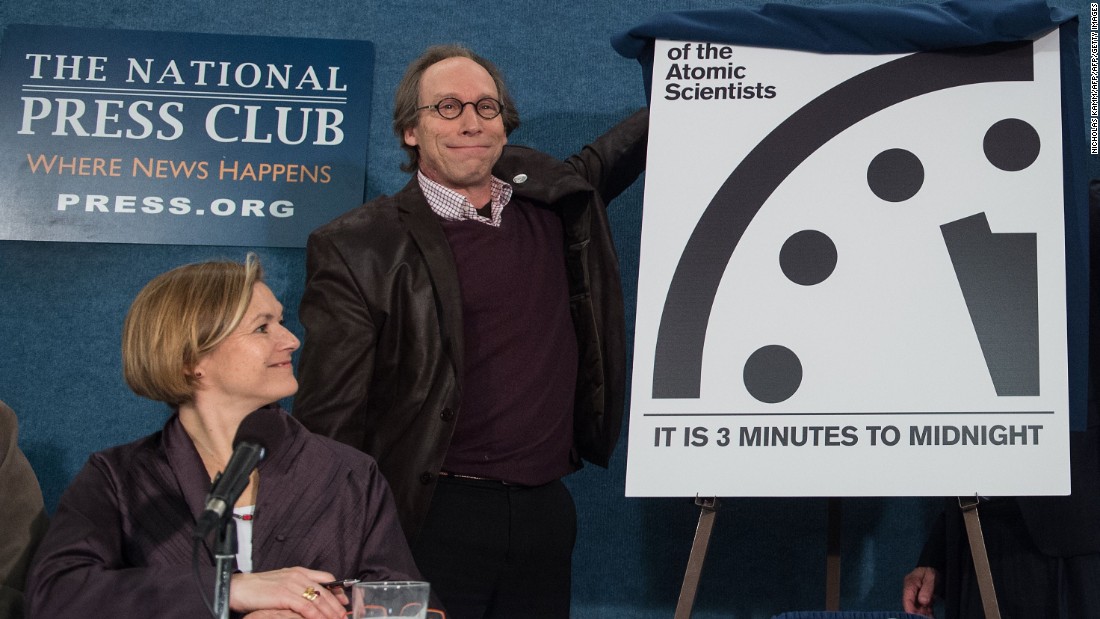
he Doomsday Clock stands unchanged at three minutes to midnight.
The Bulletin of the Atomic Scientists, which oversees the clock –a metaphor of how close humanity is to destroying the planet — left the hands in place from last year, which is the closest it has been to midnight since the Cold War days of 1984.
“Three minutes (to midnight) is too close. Far too close,” the Bulletin said in a statement. “We, the members of the Science and Security Board of the Bulletin of the Atomic Scientists, want to be clear about our decision not to move the hands of the Doomsday Clock in 2016: That decision is not good news, but an expression of dismay that world leaders continue to fail to focus their efforts and the world’s attention on reducing the extreme danger posed by nuclear weapons and climate change.
“When we call these dangers existential, that is exactly what we mean: They threaten the very existence of civilization and therefore should be the first order of business for leaders who care about their constituents and their countries.”
The Bulletin’s Science and Security Board, in conjunction with its Nobel Prize-laden Board of Sponsors, looks at global issues on a regular basis and decides whether to move the minute hand of the clock, with particular stress on the status of nuclear arms and reaction to climate issues.
Lawrence M. Krauss of the Bulletin’s Board of Sponsors said that, despite the Paris climate agreement and a deal between the U.S. and Iran, world affairs still presented formidable challenges.
“The decision is not good news but an expression of grave concern,” he said of the Bulletin’s decision.
The publication’s Sivan Kartha, a climate change expert, said trends in world climate also played an important role in keeping the clock where it is.
He called the recent Paris climate talks agreement “only a tentative success,” a description expanded upon in a statement.
“Promising though it may be, the Paris climate agreement came toward the end of Earth’s warmest year on record, with the increase in global temperature over pre-industrial levels surpassing one degree Celsius,” the Bulletin’s statement said. It called out the U.S. Republican Party, “which stands alone in the world in failing to acknowledge even that human-caused climate change is a problem.”
Last year, the clock was moved two minutes closer to midnight, from the 11:55 position it had held since 2012.
How can the clock move back? Krauss suggested that less spending on nuclear arms, a re-energized effort toward disarmament and engagement of North Korea could all help.
But the key was changing the thinking of political leaders — and humans in general.
“Unless we change the way we think, humanity remains in serious danger,” he said.
The Doomsday Clock dates to 1947. The closest the clock has been to midnight was in 1953, when it was set at 11:58 p.m. The world was at its safest in 1991, when the clock was at 11:43.
The announcement was made at a event from the National Press Club in Washington in conjunction with speakers at Stanford University in Palo Alto, California.
As reported by CNN
